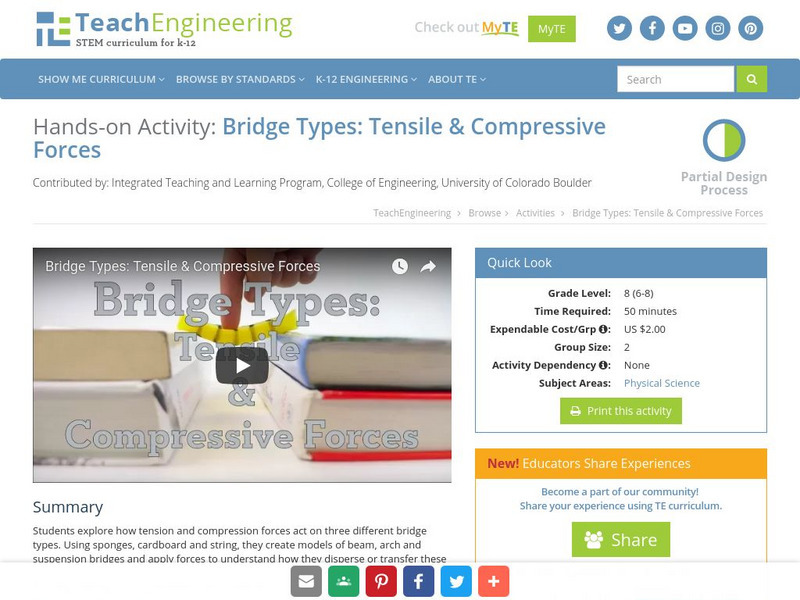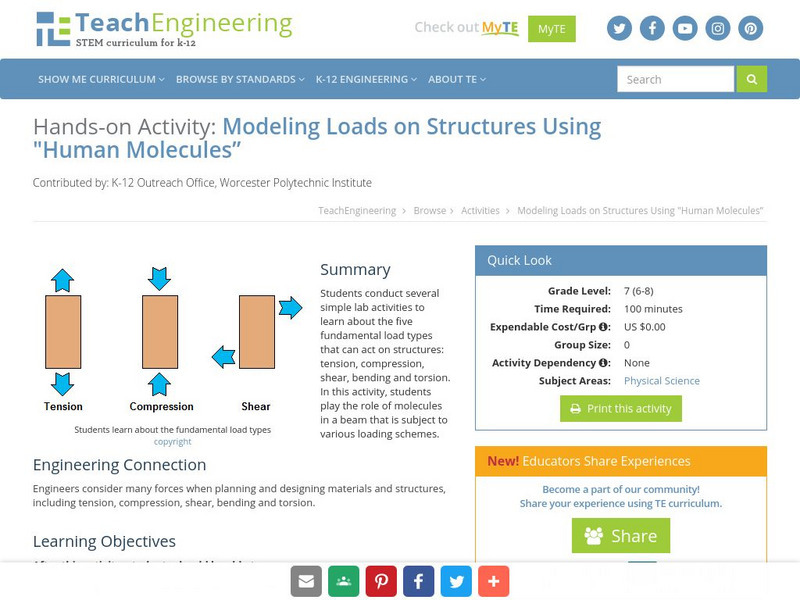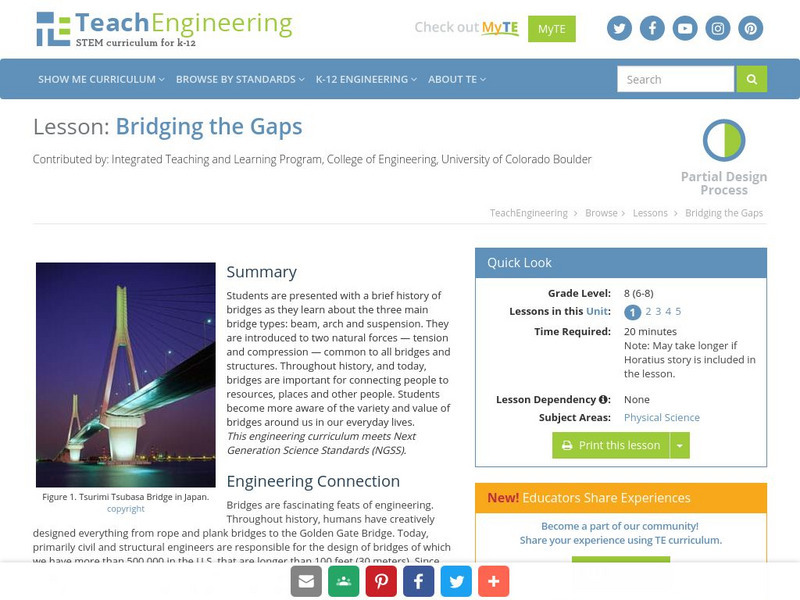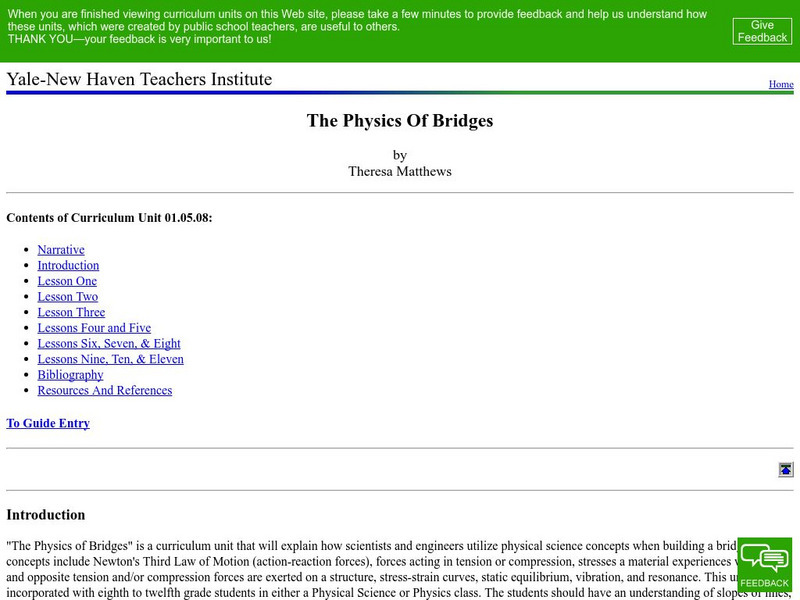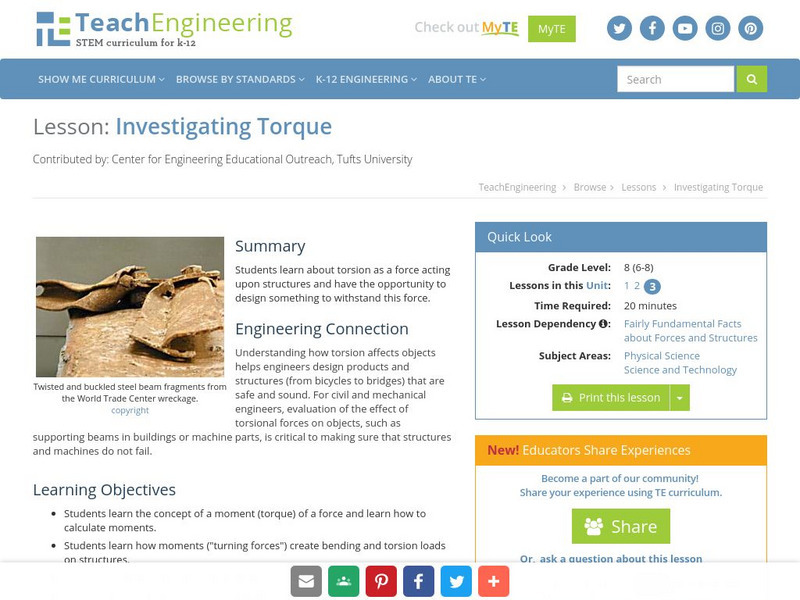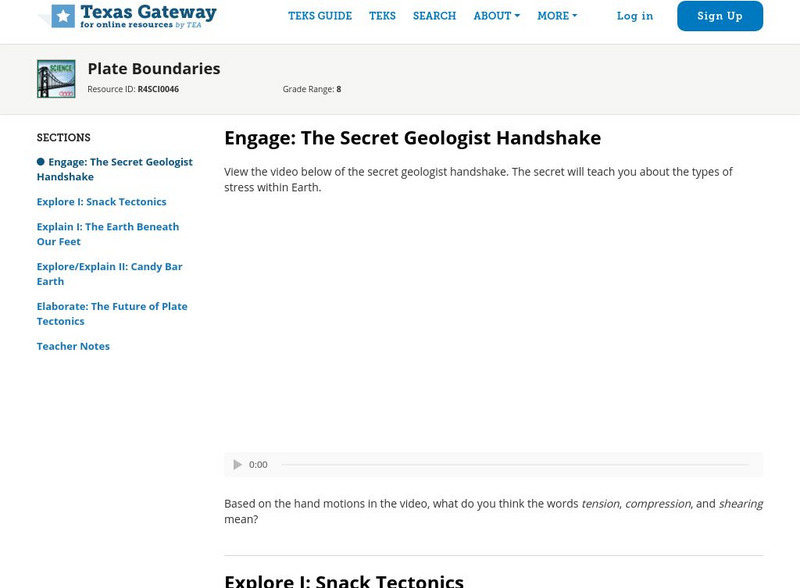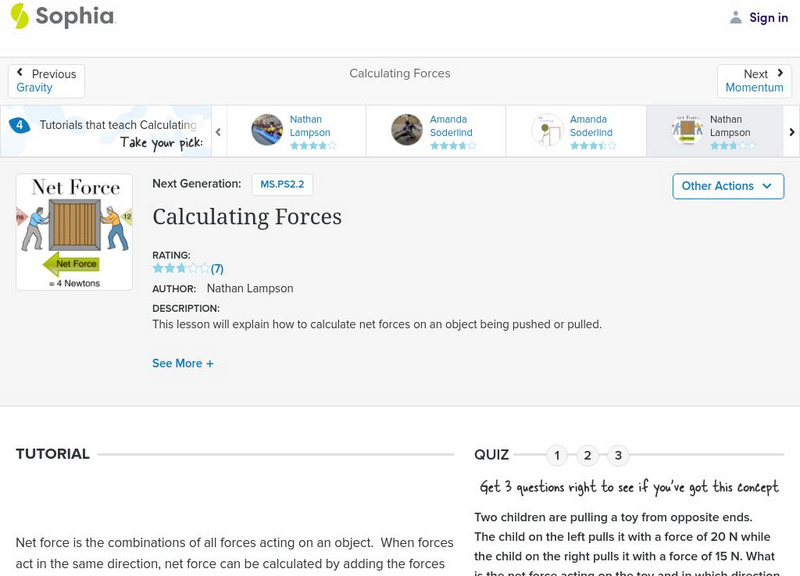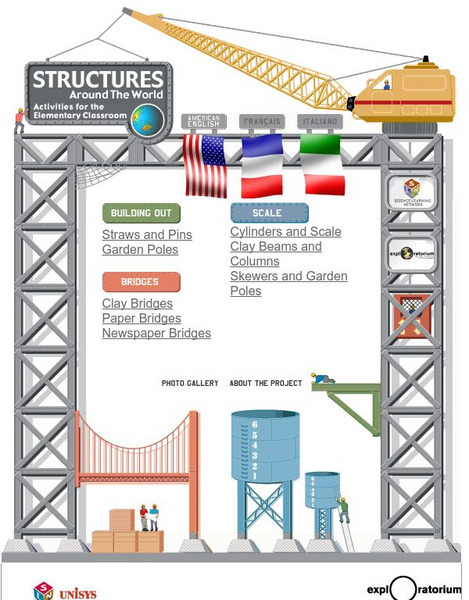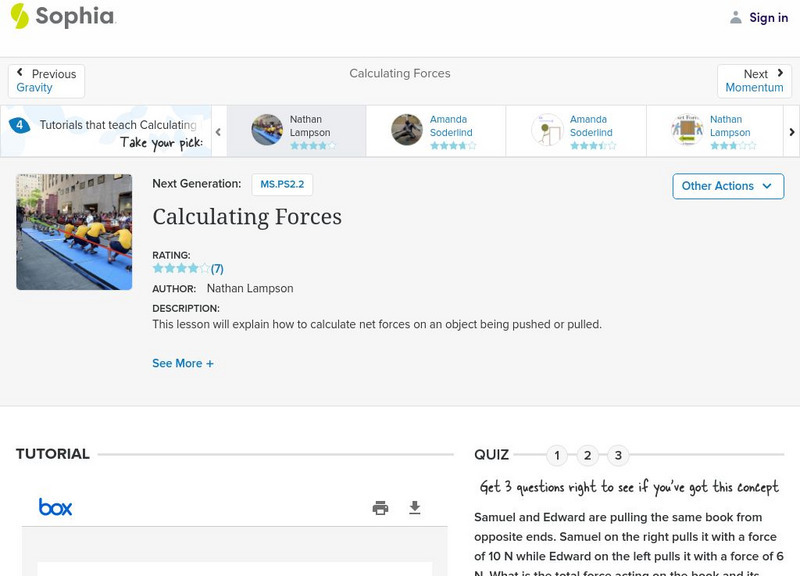TeachEngineering
Teach Engineering: Bone Crusher
Students use a tension-compression machine or an alternative bone-breaking setup to see how different bones fracture differently and with different amounts of force, depending on their body locations. Teams determine bone mass and...
TeachEngineering
Teach Engineering: Bridge Types: Tensile & Compressive Forces
Students explore how tension and compression forces act on three different bridge types. Using sponges, cardboard and string, they create models of beam, arch and suspension bridges and apply forces to understand how they disperse or...
Sophia Learning
Sophia: Introduction to Tension: Lesson 1
This lesson introduces the concept of tension. It is 1 of 2 in the series titled "Introduction to Tension."
TeachEngineering
Teach Engineering: Testing Fundamental Loads
Students will conduct several simple lab activities to learn about the five fundamental load types that can act on structures: tension, compression, shear, bending, and torsion. In this activity, students break foam insulation blocks by...
TeachEngineering
Teach Engineering: Forces on the Human Molecule
Students will conduct several simple lab activities to learn about the five fundamental load types that can act on structures: tension, compression, shear, bending, and torsion. In this activity, students will play the role of molecules...
TeachEngineering
Teach Engineering: Glue Stick Activity
In this activity students will use hot glue gun sticks to show tension, compression and torsion.
TeachEngineering
Teach Engineering: Bridging the Gaps
Students are presented with a brief history of bridges as they learn about the three main bridge types: beam, arch and suspension. They are introduced to two natural forces - tension and compression - common to all bridges and...
Physics Aviary
Physics Aviary: Practice Problems: Displaced Angle for Accelerating Car
Students must solve for the tension in the rope and the acceleration of the car based on the angle of displacement for a hanging mass.
TeachEngineering
Teach Engineering: Building Our Bridge to Fun!
Students identify different bridge designs and construction materials used in modern day engineering. They work in construction teams to create paper bridges and spaghetti bridges based on existing bridge designs. Students progressively...
TeachEngineering
Teach Engineering: Fairly Fundamental Facts About Forces & Structures
This lesson will introduce students to the five fundamental loads: compression, tension, shear, bending, and torsion.
CK-12 Foundation
Ck 12: Plix: Independence vs. Dependence: Geological Stresses
[Free Registration/Login Required] An animation to illustrate the effects that different tectonic stresses have on rocks. Also included on the site is a short quiz over tension and compression.
TeachEngineering
Teach Engineering: Stressed and Strained
Students are introduced to the concepts of stress and strain with examples that illustrate the characteristics and importance of these forces in our everyday lives. They explore the factors that affect stress, why engineers need to know...
TeachEngineering
Teach Engineering: Leaning Tower of Pasta
Using spaghetti and marshmallows, students experiment with different structures to determine which ones are able to handle the greatest amount of load. Their experiments help them to further understand the effects that compression and...
TeachEngineering
Teach Engineering: Strong as the Weakest Link
To introduce the two types of stress that materials undergo - compression and tension - students examine compressive and tensile forces and learn about bridges and skyscrapers. They construct their own building structure using...
Other
Hudson Shakespeare Company: The Tragedy of Julius Caesar: Commentary
An analysis of the characters and themes in The Tragedy of Julius Caesar. The author discusses the changes that Shakespeare made to historical events in order to compress them into the play and the literary devices he used to heighten...
Yale University
Yale New Haven Teachers Institute: The Physics of Bridges
Introduce learners to physics concepts that engineers use when building a bridge. This curriculum unit includes concepts such as Newton's Third Law, stress on a material, vibration, and resonance. Unit includes lectures, lab activities,...
TeachEngineering
Teach Engineering: Investigating Torque
This lesson focuses on torsion as a force acting upon structures. Students will have the opportunity to design something to withstand this force.
Texas Education Agency
Texas Gateway: Plate Boundaries
Find out about what happens at plate boundaries.
Sophia Learning
Sophia: Calculating Forces: Lesson 2
This lesson will explain how to calculate net forces on an object being pushed or pulled. It is 2 of 4 in the series titled "Calculating Forces."
Sophia Learning
Sophia: Calculating Forces: Lesson 3
This lesson will explain how to calculate net forces on an object being pushed or pulled. It is 3 of 4 in the series titled "Calculating Forces."
CK-12 Foundation
Ck 12: Plix: Stress Types: Geological Stresses
[Free Registration/Login Required] This site includes the chance to label diagrams and answer a short quiz about geological stresses.
Exploratorium
Exploratorium: Structures Around the World
How does that bridge stay up? What are the forces acting on that column? This site helps students understand how structures can be built by having them build their own. Also provides images of real structures for kids to compare with...
CK-12 Foundation
Ck 12: Earth Science: Geological Stresses Study Guide
Understand the basics of geologic stresses in this study guide.
Sophia Learning
Sophia: Calculating Forces: Lesson 4
This lesson will explain how to calculate net forces on an object being pushed or pulled. It is 4 of 4 in the series titled "Calculating Forces."
Other popular searches
- Tension Compression Shear
- Compression Tension Torsion
- Forces Tension Compression
- Truss Compression Tension
- Compression and Tension
- Stress Tension Compression
- Compression and Tension Forces

